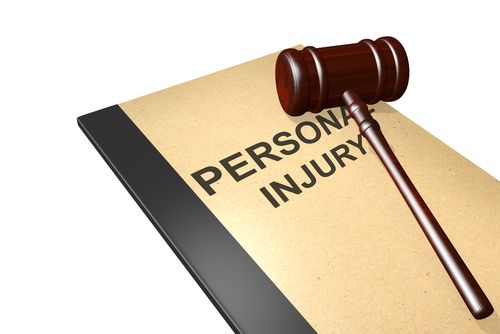Experiencing a spinal cord injury is a life-altering event that can disrupt every aspect of your daily routine. Whether the injury occurred on the streets of Queens, near the serene beaches of Jones Beach, or within the busy traffic on Northern Boulevard, understanding the potential value of your Long Island spinal cord injury lawyer in a lawsuit is crucial for securing the compensation you deserve.
Understanding Spinal Cord Injuries
Spinal cord injuries (SCIs) are among the most severe types of personal injuries, often resulting in long-term or permanent disabilities. These injuries can occur due to various incidents, including:

- Automobile Accidents: Collisions on major thoroughfares like the Long Island Expressway (I-495) or Sunrise Highway can lead to severe spinal injuries.
- Workplace Accidents: Incidents in construction zones around Hicksville or industrial areas in Freeport may result in spinal damage.
- Slip and Fall Accidents: Slippery sidewalks near the Nassau County Mall or uneven pavement on residential streets can cause SCIs.
- Medical Malpractice: Errors in medical treatment at hospitals in Hempstead or urgent care centers in Garden City can lead to spinal complications.
Understanding the cause of your injury is the first step in determining the potential value of your lawsuit.
Factors Influencing the Value of a Spinal Cord Injury Lawsuit
Several key factors determine the compensation you may receive for a spinal cord injury. These include:
Severity of the Injury
The extent of your spinal cord injury significantly impacts the value of your claim. Injuries are classified based on the level and completeness of the spinal cord damage:
- Complete vs. Incomplete Injuries: A complete injury means no sensation or movement below the site of injury, while an incomplete injury allows for some degree of sensation or movement.
- Location of the Injury: Injuries higher on the spinal cord (cervical) often result in more severe disabilities compared to those lower down (lumbar or sacral).
Medical Expenses
Compensation typically covers both past and future medical costs, including:
- Hospital Bills: Costs incurred from emergency room visits, surgeries, and inpatient care at facilities like Northwell Health or NYU Langone.
- Rehabilitation: Expenses for physical therapy, occupational therapy, and other rehabilitative services essential for recovery.
- Assistive Devices: Costs for wheelchairs, braces, or other equipment necessary for daily living.
Lost Income and Loss of Earning Capacity
Spinal cord injuries can lead to significant financial strain due to:
- Immediate Lost Wages: Compensation for the time you were unable to work immediately following the injury.
- Future Earnings: If the injury affects your ability to work in the future, you may receive compensation for the loss of potential income.
Pain and Suffering
This non-economic damage accounts for the physical pain and emotional distress caused by the injury, including:
- Chronic Pain: Ongoing pain management costs and the impact on your quality of life.
- Emotional Trauma: Stress, anxiety, and depression resulting from the injury and its consequences.
Permanent Disability
If your spinal cord injury results in permanent disability, additional compensation may be awarded based on:
- Degree of Disability: The percentage of disability assigned based on medical evaluations.
- Impact on Daily Life: How the disability affects your ability to perform everyday tasks and activities.
Liability and Negligence
Establishing the liability of the party at fault is crucial in determining the value of your lawsuit:
- Driver Negligence: Proving the other driver’s negligence (e.g., distracted driving, speeding) is essential in automobile accidents.
- Premises Liability: For slip and fall accidents, demonstrating that property owners neglected to maintain safe conditions.
- Product Liability: Holding the manufacturer accountable is necessary if a defective product caused your injury.
Calculating Compensation for Spinal Cord Injuries
While every case is unique, understanding the general components of compensation can help estimate the potential value of your spinal cord injury lawsuit.
Economic Damages
These are quantifiable monetary losses, including:
- Medical Expenses: Total costs of treatment, surgeries, and ongoing care.
- Rehabilitation Costs: Expenses for physical therapy and other rehabilitative services.
- Lost Income: Compensation for time missed from work due to the injury.
- Future Medical Care: Projected costs for ongoing treatment and care.
- Loss of Earning Capacity: Compensation for reduced ability to earn income in the future.
Non-Economic Damages
These damages account for intangible losses, such as:
- Pain and Suffering: Compensation for the physical and emotional distress caused by the injury.
- Loss of Consortium: Impact on relationships with family members.
- Emotional Distress: Stress, anxiety, and depression resulting from the injury.
The Role of Medical Evidence in Valuing Your Injury
Comprehensive medical documentation is critical in substantiating the severity of your spinal cord injury and its impact on your life. Key elements include:

- Medical Records: Detailed accounts of diagnoses, treatments, surgeries, and ongoing care.
- Expert Testimonies: Statements from medical professionals about the injury’s extent and prognosis.
- Rehabilitation Reports: Documentation of therapy progress and future care needs.
- Psychological Evaluations: Assessments of emotional and mental health impacts resulting from the injury.
Insurance Companies and Your Claim
Dealing with insurance companies is a significant aspect of spinal cord injury lawsuits. Insurance adjusters aim to minimize payouts, so it’s essential to understand their strategies and how to effectively counter them.
Some common insurance tactics include:
- Underestimating Damages: Insurers may attempt to minimize the value of your medical expenses and lost wages.
- Delaying Claims: Prolonging the claims process to reduce the likelihood of a substantial settlement.
- Blaming the Victim: Shifting responsibility onto the injured party to reduce liability.
You can protect your interests and strengthen your case by taking actions such as:
- Document Everything: Keep detailed records of all medical treatments, expenses, and communications.
- Seek Legal Counsel: Experienced personal injury attorneys can negotiate on your behalf and ensure you receive fair compensation.
- Be Cautious with Statements: Avoid making statements to insurance companies without legal guidance, as they can be used against you.
Legal Process for Spinal Cord Injury Lawsuits in Long Island
Navigating the legal process is a critical component of securing fair compensation for your spinal cord injury. Understanding the steps involved can help you manage expectations and prepare for each phase of your case.
Consultation with a Personal Injury Attorney
The first step is to consult a knowledgeable personal injury attorney who handles spinal cord injury cases. They will evaluate your case, explain your rights, and outline the potential compensation you may receive.
Investigation and Evidence Gathering
Your attorney will conduct a thorough investigation to gather evidence, including:
- Police Reports: Official documentation of the incident.
- Witness Statements: Testimonies from individuals who witnessed the accident.
- Medical Records: Comprehensive documentation of your injuries and treatments.
- Expert Testimonies: Insights from medical professionals and accident reconstruction experts.
Filing the Lawsuit
Once sufficient evidence is gathered, your attorney will file a lawsuit against the responsible party, outlining the damages you are seeking.
Settlement Negotiations
Most personal injury cases are resolved through settlement negotiations. Your attorney will negotiate with the opposing party or their insurance company to reach a fair settlement that covers all your damages.
Trial
If a fair settlement cannot be reached, the case proceeds to trial. Here, a judge or jury will determine the outcome based on the evidence presented.
Choosing the Right Attorney for Your Spinal Cord Injury Case
Selecting an experienced and compassionate attorney is crucial for the success of your spinal cord injury lawsuit. Here are key qualities to look for:
- Legal Experience: Ensure the attorney has a proven track record in handling spinal cord injury cases and understands the complexities involved in such claims.
- Local Knowledge: An attorney familiar with Long Island’s legal landscape, including courts and local regulations, can navigate your case more effectively.
- Compassionate Approach: Dealing with a spinal cord injury is emotionally taxing. Choose an attorney who demonstrates empathy and genuinely cares about your well-being.
- Strong Negotiation Skills: Your attorney should possess excellent negotiation skills to secure the best possible settlement, whether through negotiation or trial.
- Transparent Communication: Effective communication is essential. Your attorney should keep you informed about the progress of your case and promptly address any concerns you may have.
Choosing the right attorney is crucial to achieving the compensation and justice you deserve. By carefully evaluating these qualities, you can ensure you have a dedicated and skilled advocate supporting you every step of the way.
Spinal Cord Injury Lawsuit FAQs
Here are answers to some commonly asked questions regarding spinal cord injury cases:
How long do I have to file a lawsuit for my spinal cord injury in Long Island?
In New York, the statute of limitations for personal injury lawsuits, including those involving spinal cord injuries, is generally three years from the date of the accident. This means you have three years to file your lawsuit, starting from when the injury occurred. However, certain situations, such as cases involving government entities or minors, may have different timeframes. It’s essential to consult with an attorney as soon as possible to ensure you don’t miss any critical deadlines that could affect your ability to seek compensation.
Can I still recover compensation if I was partially at fault for the accident?
Yes, you can still recover compensation even if you were partially at fault for the accident. New York follows a comparative negligence rule, which means that your compensation may be reduced by the percentage of fault attributed to you. For example, if you are found to be 20% at fault, your total damages would be reduced by that percentage. It’s important to work with an experienced attorney who can help establish the extent of each party’s liability to maximize your potential compensation.
Why do I need an attorney for my spinal cord injury lawsuit?
It’s generally not recommended to handle a lawsuit without a Long Island spinal cord injury lawyer due to the complexity of such cases. Personal injury lawsuits involve intricate legal procedures, detailed evidence gathering, and negotiations with insurance companies that can be overwhelming without professional assistance. An experienced attorney can help navigate these complexities, ensure all necessary documentation is properly filed, and advocate to secure the maximum compensation you deserve.
What should I do if the insurance company offers me a settlement?
If an insurance company offers you a settlement, it’s important to approach it with caution. First, consult a personal injury attorney before accepting any offer to ensure that the settlement adequately covers all your current and future expenses related to the spinal cord injury. Insurance companies often aim to minimize payouts, so having legal representation can help you negotiate a fair and just compensation. Avoid making hasty decisions and make sure you fully understand the terms and implications of the settlement before agreeing to it.
How long does a spinal cord injury lawsuit typically take to resolve?
The duration of a spinal cord injury lawsuit can vary widely depending on several factors, including the complexity of the case, the extent of the injuries, and whether the case goes to trial. On average, such lawsuits can take anywhere from several months to a few years to reach a resolution. Factors that can influence the timeline include the speed of evidence collection, the willingness of parties to negotiate, and the court’s schedule if the case proceeds to trial. Working with an experienced attorney can help streamline the process and keep your case moving forward as efficiently as possible.
Contact a Trusted Spinal Cord Injury Lawyer Today
A spinal cord injury is a profound and life-changing event that requires not only immediate medical attention but also a strategic approach to securing the compensation you deserve. Understanding the factors that influence the value of your lawsuit, from the severity of your injury to the long-term impact on your life, is essential for making informed decisions during this challenging time.
Handling a spinal cord injury lawsuit in Long Island, New York, requires skill, compassion, and dedication. If you or a loved one has suffered a spinal cord injury due to someone else’s negligence, partnering with a knowledgeable personal injury law firm can make all the difference in your journey toward recovery and justice.
At Rosenberg & Gluck, LLP, our team of experienced personal injury lawyers is committed to supporting you. With over 100 years of combined experience, a proven track record of local success, and the resources to take on insurance companies, we are here to help you rebuild your life. Contact us today at (631) 451-7900 or through our online form for a free consultation and let us advocate for the compensation you deserve.









